We Buried The Placenta - Finally, And It Was Sacred But Also So Real.
The Over-Idealization Of Ancient Sacred Practices & Rituals in Modern Times
I used to think this whole practice of burying your child’s placenta was some super sacred thing ~ and don’t get me wrong, anything can be sacred, simply by the intention you bring to it.
But what I’ve come to realize is that social media has created a false narrative around many ancient practices that modern folks are now reclaiming. I see this especially in the modern spiritual motherhood journey, where mamas are seeking to reconnect with a more organic, natural way of living.
The curated realities we see on social media around natural mothering often come from a developed-world narrative ~where many mothers, who share online on choosing to reclaim a more organic and natural way of living are able to access various resources that are, truthfully, only made available because of the socioeconomic landscape they’re a part of.
The truth is, in this modern time, money runs everything. If you want to access the high-quality, natural, organic things ~you need money. Unless you come from family, from intergenerational wealth that has already positioned you to access land, time, and resources, you’re gonna have to find a way to afford it.
As a mama in a third world country, and someone who has experienced natural birthing and organic living in America ~a first world country~ I know fully that it’s your financial and socioeconomic situation that allows you access to the type of aesthetics of natural motherhood you desire, and that is presently so popularly presented via social media.
The natural mama aesthetic goes something like this: natural birthing, breastfeeding, making food from scratch, intentionally handling the placenta, staying home with your children, divine union (having a balanced relationship where you and your partner’s masculine and feminine energies are working in harmony and support of your feminine and motherly needs), etc. These are some of the general themes that fall under the natural and organic mothering category. And of course, these practices within themselves do not require wealth but, to sustain a high quality in these practices, in many modern realities, a mama needs access to money and/or resources.
And yes, this is in an ideal sense ~because obviously, and unfortunately, not all mamas on this path are partnered with men of integrity who continue to support after they have planted the seed in that woman’s womb. To my single mamas who have been bamboozled by weak masculines, I empathize with you. This journey of organic living and mothering is built on a foundation of union~ because it takes two, male and female, to procreate, and it requires both the energies of the masculine and feminine to sustain a child.
Of course, we could go into a whole blog on the different ways masculine and feminine energies show up to create community around children ~outside of the traditional landscape of heterosexual marriage and union~ but that’s for another time, if it aligns.
But anyway, with this shift to the organic and natural mothering path ~and being in the digital age~ what we see is an oversaturation of realities rooted in first world environments. And because of that, we see narratives from women who may have never experienced living outside of their governmental sphere ~meaning, they know nothing of navigating life without the first world patriarchal systems they were born and raised in. These systems offer a certain level of stability, but they also come with a gross disconnection from reality~ outside of their first world experiences.
This matters -greatly- because to truly understand the breadth of the journey of consciousness expansion, and the collective “healing” process where humanity must shift back to a more harmonious way of living, we must understand that the socioeconomic state of a person greatly impacts their spiritual development journey.
This matters because our wars in humanity have been rooted in socioeconomic warfare ~where people, cultures, and races have been enslaved, left severely traumatized and impoverished, and have manifested generations of lack~ including the many mothers who lack access to the aesthetically curated “natural mothering” realities we see shared by first world mothers.
When I started my natural mothering journey at 20, I initiated myself by choosing to birth my child outside of the American medical system. This was all intuitively led. I had my own mother, living in Jamaica, worried for me ~she had many doubts and fears around the path I was choosing to birth my child, as she had her own traumas in birth.
Her biggest fear was that I could die giving birth ~and I now understand this fear so deeply, as I’ve deepened on my path of consciousness expansion, which is rooted in understanding the socioeconomic, emotional, and psycho-spiritual aspects of the disharmony we are experiencing in our lives today.
When I embarked on my natural birthing and mothering journey, I had no guidance around any of this, and I never considered what would happen to the baby’s placenta after birth. However, owing to my financial and socioeconomic situation at the time ~through my husband’s financial support of our family journey~ I had access to a full natural birth service at a birthing center. It included everything: education, check-ups, the birth itself, and postpartum support. I was so grateful for this as a first-time natural mama.
But again, I must emphasize that this was only accessible to me because I was able to pay for that access. This is the modern socioeconomic model of life ~not just in the first world, but truly across the globe.
Once upon a time, these things were simply a natural part of village life. There were midwives who held ancestral wisdom, grandmothers helping their daughters and granddaughters to birth ~not as an aesthetic, but as a survival necessity. Babies had to be born, and there were no medical professionals readily available~ so women had to learn how to birth their babies, and the wisdom would trickle down the lineage.
Times have changed. Trauma has been interwoven into the landscapes of our lives. Lineages are impoverished ~without land to grow their foods, birth their babies, bury their placentas and the dead. We are so terribly displaced and uprooted.
Birth has become something to fear, as women are now plagued by illnesses rooted in malnourishment. Women’s bodies are struggling to keep up with their natural physiological functions due to poor living conditions ~and this isn’t just about being socioeconomically poor, but also about having poor lifestyle practices, even when one is financially privileged.
Now, in modern times, the reality is that there are many mothers who choose a natural path of birthing and mothering because it feels intuitively right ~but who, because of the socioeconomic environment and situation they’re in, cannot access the quality support and resources needed to truly empower that path.
This is something I’ve personally come to experience in my third ~and most recent~ natural birthing experience, living in the rural, low-infrastructure plains of Jamaica. We are a returnee and expat couple with our children, choosing to navigate an alternative path: cultivating a sustainable family life and building businesses to support ourselves outside the modern societal work-life rhythms.
Living in a third world country ~where minimum wage is $3 an hour, and where access to quality resources is limited and gatekept by price tags due to the business of importation~ often means the most sustainable path for those on a natural living journey is to get out of the urban system altogether. Going back to the rural sides, where the rhythms of life and the environment are much more aligned with natural and sustainable living, becomes necessary.
Yet, even there, the political and socioeconomic realities are strained ~deeply impacted by systemic and intergenerational poverty.
For all three of my birthing experiences, I have chosen the natural path—not only because it felt intuitively right, but also because it has been the most sustainable option given the socioeconomic situations I’ve been in.
Coming up, I’ll be sharing stories from all three of my natural birthing experiences inside my Ko-fi Virtual Village Membership Space. If you’d like access to these stories, you’re invited to become a supporting virtual village member for as little as $12/month. You’re welcome to choose what feels right for you in reciprocal support of this journey and the sharing of my stories ~ starting from $12 and up.
Alternatively, if you’re not fully ready to commit to a membership but would still like to access my work, you can drop a one-time tip via my Ko-fi tip button and gain access to all my exclusive content for one month.
To read more about my after-birth placenta processes ~and the hiccups that came with my first two placentas~ join me on Ko-fi here.
Blog Preview
My First Placenta - Capsules
For my first natural birthing experience, I chose to have my daughter’s placenta turned into capsules. I didn’t know anything about this practice at the time, but with the guidance of the birth workers, I was told it was a way to receive nourishment from the placenta back into my postpartum body.
After birth, we did delayed cord clamping ~another practice I had learned about during this natural pregnancy and birthing journey. After my husband cut the cord, the placenta was taken by the nurse who worked with us and sent off to be processed into capsules. The next time I would see the placenta would be when we picked it up in its new form ~encapsulated.
Taking these capsules was something I never imagined I would do. There was no ancestral wisdom passed on to me around this practice, but I was open ~and honestly, so excited to be journeying with more intention around my birth and after-birth processes.
The reality, though, was that amidst these sacred and intentional birthing practices, the mundane and messy aspects of life were still happening. We were in the midst of…
I appreciate you taking the time to tune into my life stories.
To keep reading this exclusive blog post on my journey with my placentas ~and the wisdom gained through the messiness and chaos of our everyday life experiences~ support us as a Virtual Villager on Ko-fi [here].
Your support empowers me on this path and allows me to continue nourishing my family, as we strive forward on our path here in Jamaica.

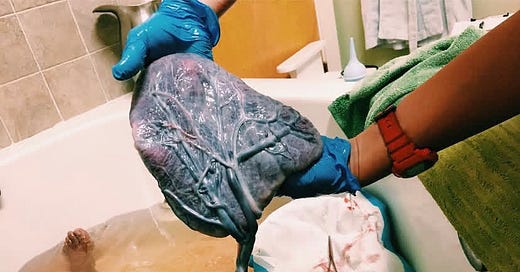


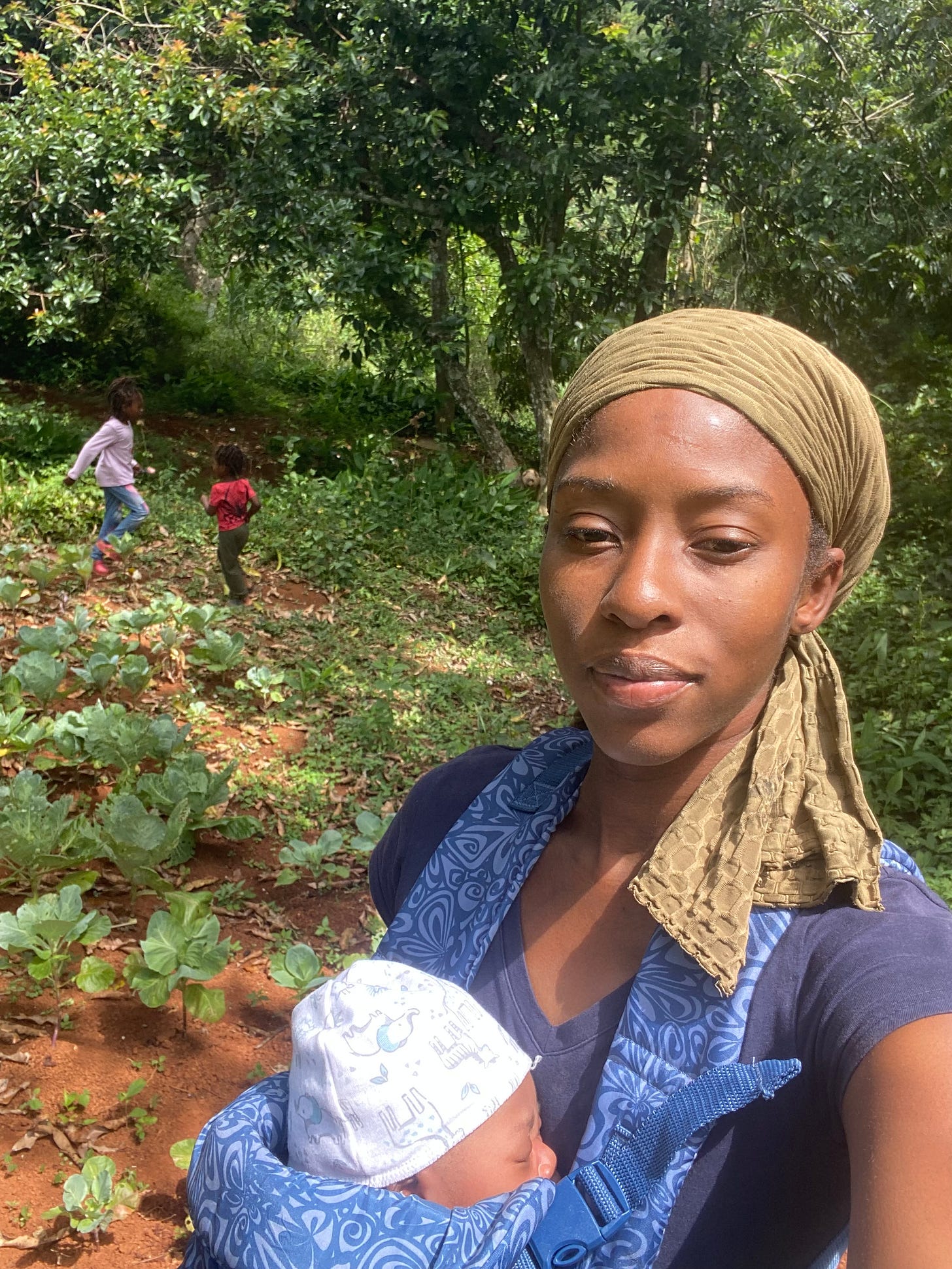
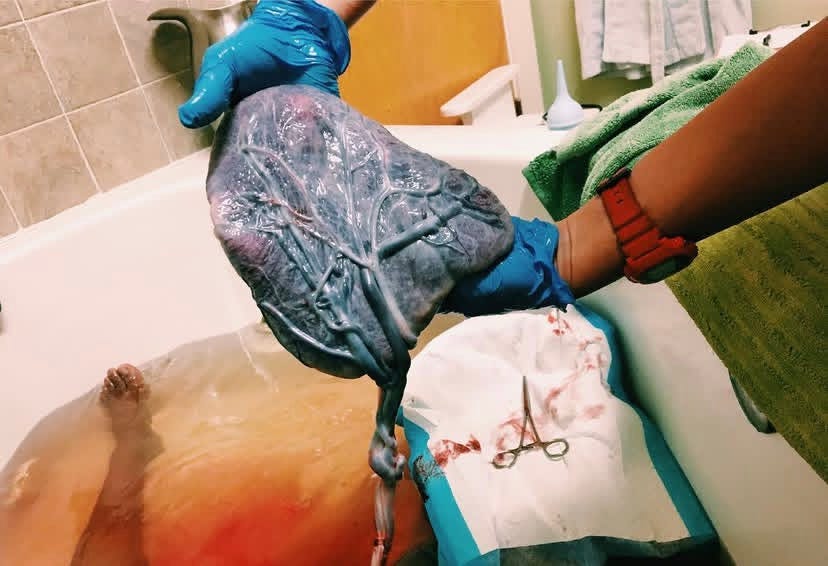
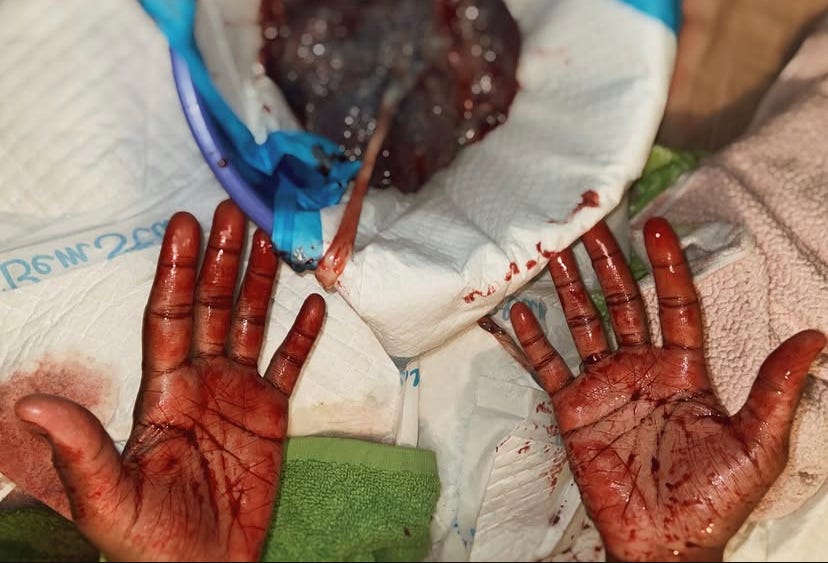
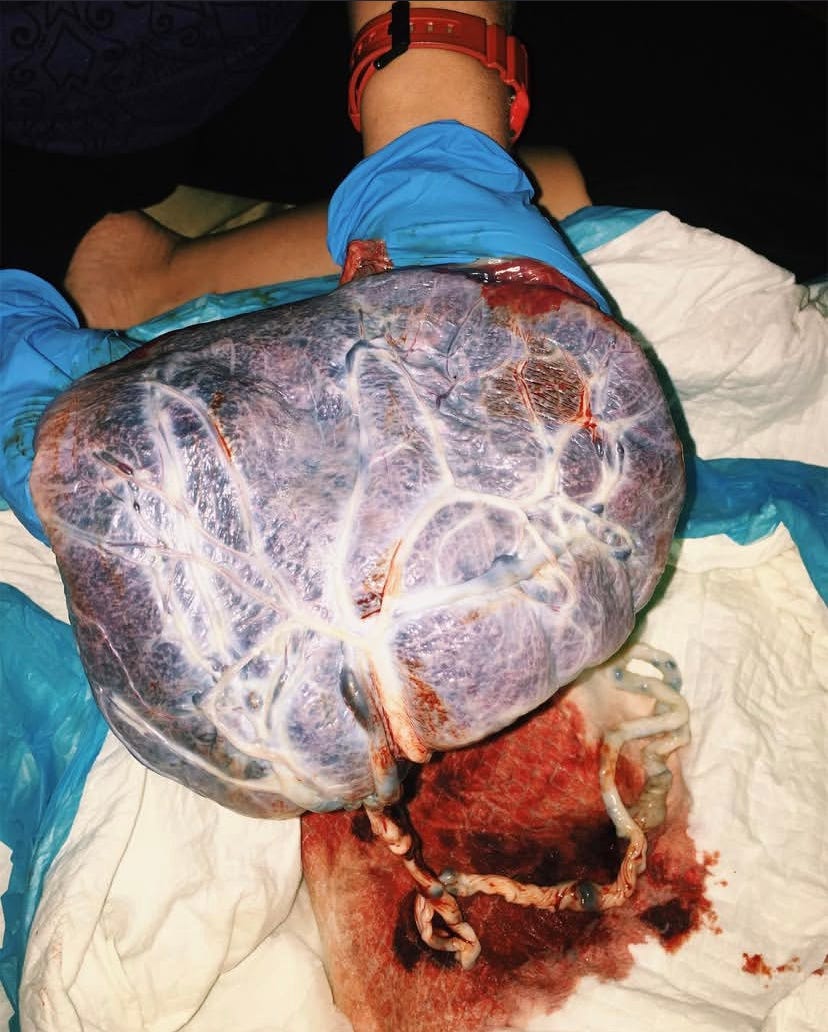
For the first time ever on Substack, I saw this post hidden for explicit content and had to click through to see it. I’m not sure how I feel about that, but always love stories of reverence for placenta and the transformations of motherhood across babies and the growth in experience and maturity that comes along with the journey. Thank you for sharing, Makeda, and best wishes.
This spoke straight into a place I’ve long held quiet.
I’m a mother in South Africa, and while I also had financial support to access a birth center (we saved since the day knew I was pregnant to have this it was not easy to access either as we live in far from any major cities and no willing midwives to travel to where we live on game reserve) I too was the first in my lineage to walk a natural path led by intuition at 20 years old, not tradition, no inherited map, no guidance, no education inspiration from social media. 🫣
What you name about how first-world narratives dominate the “natural mama” space while erasing the impact of trauma, access, and inherited scarcity rings so true to what I witness in my community daily, especially in rural areas around my hometown.
Thank you for putting voice to what so many carry. Your words are medicine.